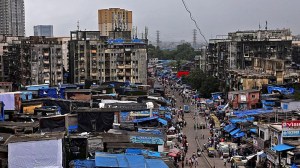Meet the master sculptors who crafted Nataraja towers at G20 summit venue
Crafted by sculptors from Swamimalai in Thanjavur district of Tamil Nadu, the Nataraja statue, an ashtadhatu (eight-metal alloy) masterpiece, weighs 18 tonnes – a trailer with 36 tyres was brought to transport it to Delhi.
 The Nataraja statue at Bharat Mandapam, the venue of the G20 Summit in New Delhi. (Express photo by Tashi Tobgyal)
The Nataraja statue at Bharat Mandapam, the venue of the G20 Summit in New Delhi. (Express photo by Tashi Tobgyal) When world leaders gather this weekend at Bharat Mandapam, they will come face-to face with a magnificent statue of Nataraja, Lord Shiva in his cosmic dance, and at 27 feet, towering over the venue for the G20 Summit.
Crafted by sculptors from Swamimalai in Thanjavur district of Tamil Nadu, the Nataraja statue, an ashtadhatu (eight-metal alloy) masterpiece, weighs 18 tonnes – a trailer with 36 tyres was brought to transport it to Delhi.
Its makers call it a harmonious blend of tradition and modern requisites. Speaking to The Indian Express, 61-year-old Srikanda Sthapathy, who made the statue with his brothers Radhakrishna Sthapathy and Swaminatha Sthapathy, said they are overwhelmed by the recognition and phone calls congratulating them on their work.
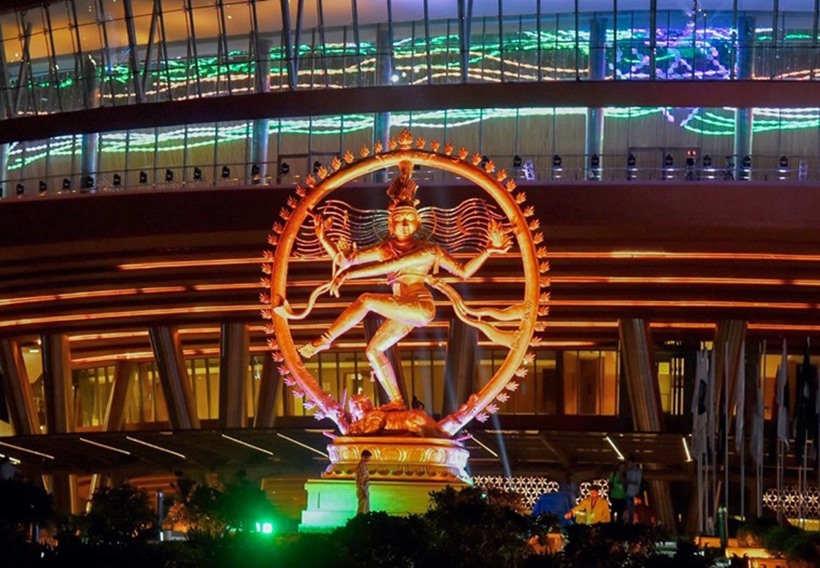 The world’s tallest Nataraja Statue installed at Bharat Mandapam, the venue of the G20 summit, ahead of the summit
The world’s tallest Nataraja Statue installed at Bharat Mandapam, the venue of the G20 summit, ahead of the summit
They trace their craftsmanship to the era of the Cholas – the construction of the Big (Brihadeeshwara) Temple – and their lineage goes back 34 generations.
Trained in the ancient gurukul system, the Sthapathy family was handed the Nataraja project after meeting stringent criteria set out in a tender by the Indira Gandhi National Centre for the Arts, Ministry of Culture.
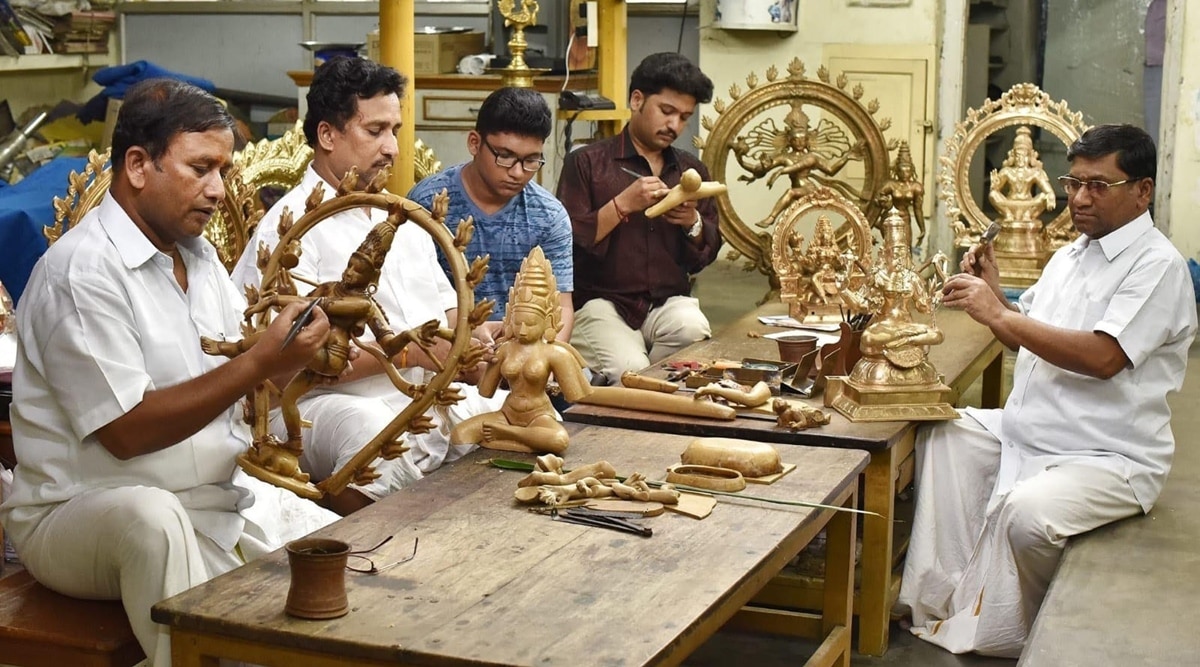 Srikanda Sthapathy (right) with Radhakrishna Sthapathy and Swaminatha Sthapathy (left, in white).
Srikanda Sthapathy (right) with Radhakrishna Sthapathy and Swaminatha Sthapathy (left, in white).
“Our proven expertise in crafting over ten significant statues, conditions such as successful completion of over 300 orders in five years with GST details were integral to the tender process,” Srikanda said.
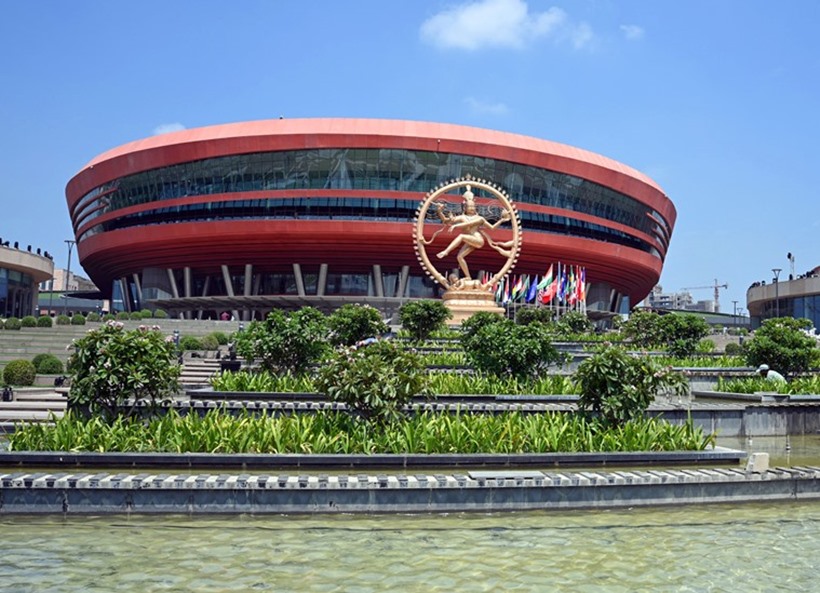 A view of the 27-feet-tall world’s largest Nataraja statue
A view of the 27-feet-tall world’s largest Nataraja statue
He said the design of the statue draws inspiration from three revered Nataraja idols – the Thillai Nataraja Temple in Chidambaram, Uma Maheswarar Temple in Konerirajapuram, and the UNESCO World Heritage Site of Brihadeeshwara Temple in Thanjavur.
“The crafting process adopted was the traditional ‘lost-wax’ casting method, indigenous to the Chola era. The initial stage involved the crafting of a wax model, meticulously detailed with ornaments. The entire mould was then covered with a unique alluvial soil paste, found solely in Swamimalai,” he said.
What is key to this method is the Cauvery clay from a particular turn of the river at Swamimalai.
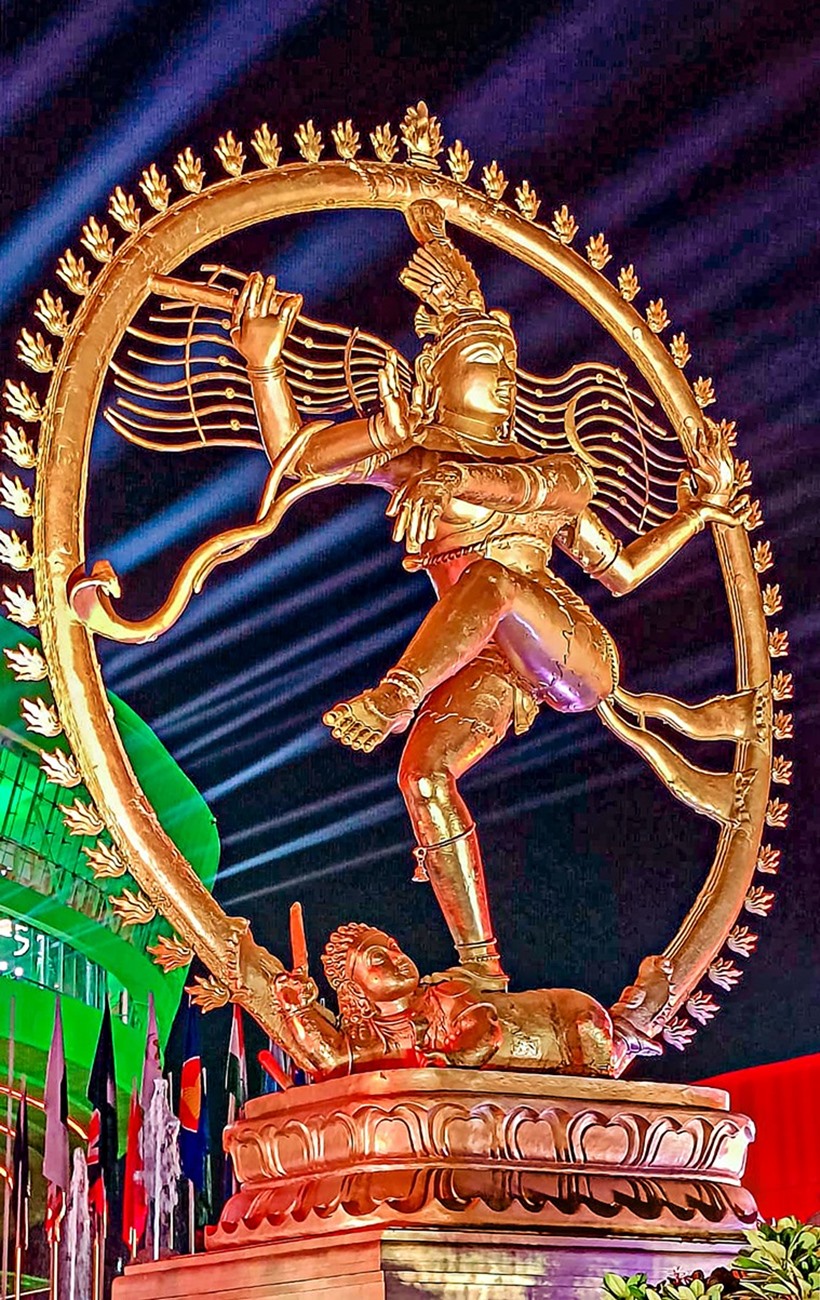 Nataraja statue at the Bharat Mandapam
Nataraja statue at the Bharat Mandapam
“After drying in the Sun and multiple coatings, the wax within the mould is melted out, paving the way for pouring of the liquid metal. The mould, after cooling, is then carefully broken, revealing a statue that is then chiselled, filed and engraved to achieve the ornamental finish,” Srikanda said.
Originally intended to be made from panja loha, the statue transitioned to being crafted from ashtadhatu.
Between the conception and execution, a delegation offered feedback on the wax model, necessitating minor alterations to the statue’s limbs. The base wax model was a collaborative effort between Srikanda and his two brothers, and the entire project took seven months to complete.
The cost? Rs 10 crore “including GST,” Srikanda said.






